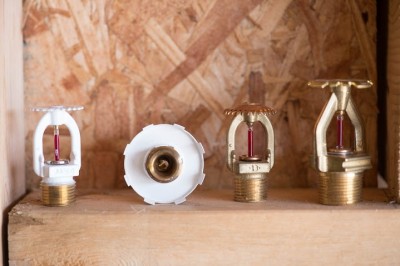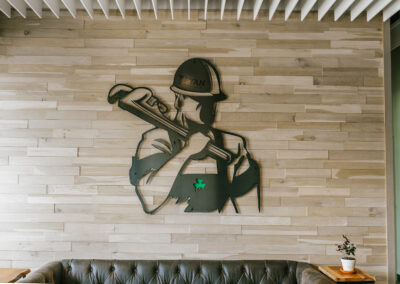 There are 4 major types of fire sprinkler systems, each with unique requirements for installation and inspection. Below is a helpful primer on fire sprinkler systems.
There are 4 major types of fire sprinkler systems, each with unique requirements for installation and inspection. Below is a helpful primer on fire sprinkler systems.
Wet Pipe Systems
A wet pipe fire sprinkler system is continuously filled with water, so wet systems can only be used in environments that are conditioned and consistently maintain a temperature above 40 degrees Fahrenheit. Pressurized water resides in the pipe until a fire is detected. Each sprinkler has a heat-sensitive element manufactured to a specific temperature. Sprinklers activate water only in the direct vicinity of the fire, which minimizes water damage. Wet systems are generally the most common type of fire systems.
The wet pipe system also requires the least amount of recovery time. After a fire, the system is reinstated by replacing the fused sprinkler and turning on the water supply.
Dry Pipe Systems
Dry pipe sprinkler systems are filled with pressurized air, rather than water. Air holds a remote valve, known as a dry pipe valve, in a closed position. The dry pipe valve restricts water from entering pipes until there is a fire. Once the sprinkler activates, air is released, and the dry pipe valve is discharged. Water then enters the pipe and flows through the piping system and onto the fire.
Dry pipe sprinkler systems are commonly installed in areas where freezing conditions exist. Attics, loading docks, commercial freezers, and unconditioned warehouses are common examples of where dry pipe systems would be applicable.
Pre-Action Systems
A pre-action fire sprinkler system applies the same primary concept of a dry pipe system, in that there is no water held inside the pipes. The only difference is an electrically operated valve, called a pre-action valve, controls water into the piping system.
Before the sprinkler will operate, the detection system must recognize a fire and allow water into the system. Then the individual sprinkler heads will release water over the fire.
Pre-action systems are commonly found where high valued content is stored, such as computer rooms, MRI rooms, and art museums.
FM-200 & FE 25 Systems
FM-200 is a waterless, clean agent, fire-suppression system that provides an environmentally safe, non-toxic product. FE 25 is a common alternative to FM-200. They require no clean-up and can be used in rooms that have anything from computer servers to priceless works of art. These systems leave no residue upon discharge and uses ventilation for removal. FM-200 is a liquid contained in cylinders pressurized with nitrogen. As the agent enters the discharge nozzle, it vaporizes and overtakes the hazard area as a gas. A FM-200 system takes up little space while providing effective fire protection.
